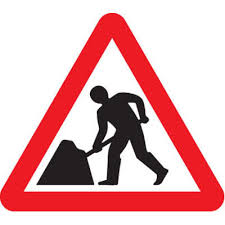There are some areas in many traffic zones that are regarded as hot spots. You may have seen an accident at one of these spots or been unfortunate enough to have suffered one. On occasions the city works department may put signs up close to the area to alert people of the dangers of this area. Somehow though that may not be enough.
What else should they do? It is entirely dependent on the location of the crash spot though. So let’s look at three possible scenarios and see what can be done for this. There is an intersection where two roads intersect at ninety degrees to each other. An intersection between a main road and a secondary road that meet at an irregular angle. Finally a single road with a very deep bend in it.
 In the first scenario the obvious choice is a stop light. There are other steps which can be taken. Line marking service at A1 Line marking placed on the ground to direct respective drivers as to where they can and should not go. The words should not and not cannot are used as they are always drivers who feel they flaunt the rules. In the second scenario a corner with an irregular angle will make it difficult for drivers to see much past the corner. Again here a stop light is crucial. In the final scenario there is only one road but there is a chance that a driver not familiar with the road may arrive at the bend with too much speed and end up running off the road. What the authorities normally use here are bollards.
In the first scenario the obvious choice is a stop light. There are other steps which can be taken. Line marking service at A1 Line marking placed on the ground to direct respective drivers as to where they can and should not go. The words should not and not cannot are used as they are always drivers who feel they flaunt the rules. In the second scenario a corner with an irregular angle will make it difficult for drivers to see much past the corner. Again here a stop light is crucial. In the final scenario there is only one road but there is a chance that a driver not familiar with the road may arrive at the bend with too much speed and end up running off the road. What the authorities normally use here are bollards.
A bollard is a short vertical post. These posts were originally used at ship ports for mooring. Now they are also used in variety of ways to direct traffic by using A1 Linemarking Pty Ltd. Bollards installation could actually be used in all three scenarios. When used for traffic purposes they are effective at directing and preventing drivers from going where they aren’t supposed to. They are several kinds of bollards though and for each of the aforementioned scenarios a different kind of bollard would be used.
In the first scenario where the intention may be to keep drivers who are turning in a different lane from drivers going straight on then a flexible but fixed bollard may be used. These bollards are called removable bollards. They are hinged at ground level but are locked in place. If necessary they can be moved or folded down for a vehicle to drive over. In the second scenario portable types can be used. Also since they are brightly coloured drivers will slow their speed in case a driver comes out and can’t see clearly around a corner. In the final scenario a protective bollard would be put in place. These are very rigid structures that can sustain the force of a crash from a car. These would help protect property that is off the road as well as keep the vehicle from running off the road.